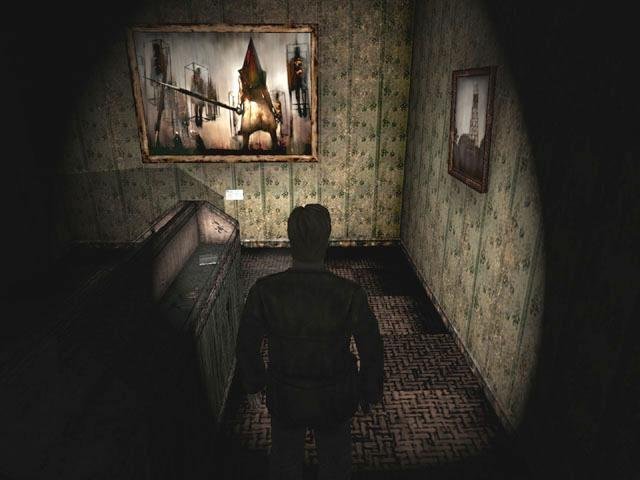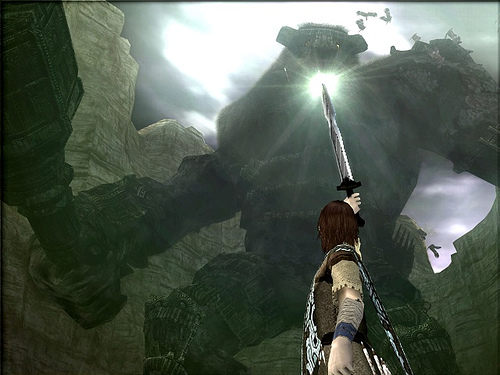Trending
Opinion: How will Project 2025 impact game developers?
The Heritage Foundation's manifesto for the possible next administration could do great harm to many, including large portions of the game development community.

Featured Blog | This community-written post highlights the best of what the game industry has to offer. Read more like it on the Game Developer Blogs or learn how to Submit Your Own Blog Post
How do we get beyond just tension and excitement?

Auteur video game designers have a dream: To make a game that affects players on an emotional level. A game that inspires players to personally invest themselves in the drama. A game that makes players cheer in their victories and cry in their defeats. A game that reaches into the player immersed in the experience and leaves a lasting impression that...
Okay, you get the idea.
Let's talk about these “emotions,” though. Happiness, sadness, anger, fear. We're not talking about mere excitement, we're talking about that guarded, private space in our hearts – our most visceral reactions. And when it comes to games and play... many of us aren't sure how to access that space.
We know that games are great at pacing tension. Anyone who's played God of War has felt the kind of fun, intense excitement video games can offer. But even the most intense gameplay experiences have a tough time reaching into what we call emotion. In fact, many games feel rather bland in that department. The story might be interesting, the gameplay might be mentally challenging, and the aesthetic might be visually pleasing, but at the end of the day, there wasn't a single moment that left a profound impression on us.
On the other hand, nearly everyone has at least one example of a game that tugged at their heartstrings. And when Roger Ebert makes a comment that sets the industry ablaze (thanks to its collective low self-esteem), these examples become our “arty” games.
We know that games can invoke emotions in us, but how does it work? What causes a game experience to become personally profound?
Let's start by looking at survival horror games.
I Promise There Will Be a Monster

Personally, I can't stand scary games. I keep psyching myself out of them. “Okay, it's quiet and it's dark. I know that something's waiting to jump out at me somewhere around here. I don't know what it is, but I know it has to scare me. It's probably going to be ugly and bloody, with sharp fangs or claws, and it will probably kill me by tearing out my guts while I listen to myself scream in bone-curdling agony- CRAP, WHAT WAS THAT SOUND?! SCREW THIS, I'M OUTTA HERE!”
And after five minutes passing with no incident, I have to retreat to the security of the Windows desktop. The game did almost zero work – I scared the heck out of myself. The best scary games pull this off perfectly. Conversely, bad horror games have the scary monsters jump out at you as soon as possible. It will freak you out and surprise you, but after five minutes, you'll know everything you need to know: what the monster looks like, how it attacks, and how much damage you can take from it. At that point, the scary experience returns to being a game.
But good horror games do something remarkable. They create visceral fear in the player, something all-consuming and memorable. They break through the player's emotional defenses and prey upon their basic responses. Horror games do exactly what the rest of us want to do: invoke emotion.
Of course, this covers only fear. We want the whole spectrum of happiness, sadness, and rage as well. So the question is: Can the principles of creating fear be applied to other emotional responses?
For fear, the main contributor is the player's own mind. The monsters in the player's head will always, always be scarier than the monsters you put in the game. But the player doesn't know this. They don't know what you have waiting in the shadows. All you've done is promise that there definitely will be monsters, and that the player's life is at extreme risk because of that. The rest is up to the player to find out.
It's a bit like Schrodinger's Cat – the range of possibilities is potentially infinite until the mystery is solved and reality collapses into its definite form. And it's that mystery – that range of possibilities – that creates the gateway to emotional response.
It Could Be Anything

Shadow of the Colossus is definitely one of “those” must-play games, one of the trumpeted examples of the medium's worth and potential. It gets this reputation because it succeeds in inspiring emotional responses and personal investment in the players. And it does this because it constantly pushes the envelope of possibility in the player's mind.
Unless you look at a lot of gameplay videos, you don't know what the colossi are like until you're already underfoot of the first one. The player sees a daunting task ahead. How in the world do you kill something so massive? It becomes a dramatic mystery that needs to be solved as soon as possible... because the colossus is approaching you, the ground shaking with its every step. And this mystery has a wide range of possible answers at first: Do I shoot it? Do I hack away at its feet? Do I... climb onto it?
The climbing system also leaves room for a wide range of possibilities. It's very robust, which means you can even hang onto the hair of a walking/flying colossus, even though you'll have been thrown around in every conceivable way by the end of the game. The stamina gauge creates the possibility that you can lose your grip anywhere. And the colossi will try to shake you off, challenging your grip and balance no matter where you are on their bodies. Even when you figure out how to get onto the colossus, there is still a wide range of possible outcomes while you climb.
It's similar to what I've previously speculated about the “flow” state. When there's a broad spectrum of control where small differences matter, it seems much easier to get sucked into flow. From a narrative perspective, you can say the player is putting a personal stake in the outcome of their performance.
And after all this trouble, the colossus finally comes down. The soundtrack, once providing an inspiring backdrop to your heroics, now changes to a tragic theme. The killing of the colossus is supposed to be a sad event, even though it was your enemy. Now a range of meta-narrative possibilities has been opened up – are they villains or victims, and are we heroes or murderers?
But our directive is to go to the next colossus. And the cycle begins again: the next colossus isn't at all like the last one, and a new dramatic puzzle appears.
The whole game revolves around these mysteries: Am I skilled enough to kill these colossi? Is it really the right thing to do? When these questions open up to a wide range of possible outcomes, we become personally involved in our quest to find the answer, and we open ourselves up to emotional response. When we deliver the final blow, we feel happy and proud. When the colossus falls and the music starts, we feel sad and remorseful.
Shadow of the Colossus effectively demonstrates how emotional responses can be triggered in players. First, a dramatic mystery with unknown outcomes has to be presented to the player, potentially inspiring them to place a personal stake in it. From there, the act of discovering the mystery's definite outcome can be an emotional moment.
This dynamic is directly parallel to a principle from Robert McKee's Story seminar: the Gap.
The Substance of Story

Most games, at their beginning, tell you how the world works. There are these people, these issues, these procedures, and life is A, B, C, D, E. And the player, having been told what to expect, has no reason to wonder about other possible outcomes. If something unexpected surprises them later, the player has only the game to blame because it had concealed information from them.
Life isn't like that, and games shouldn't be like that. We expect things to be A, B, C, D, E, since it looks all the same. But when we try to follow that, life kicks us in the butt and says, “Nope, we start with D today.”
This is the Gap.
We go to slay our first colossus, expecting the boss fight to work the same way that so many others have. Then we actually see it for the first time, and we realize that there's a gap between what we expect and what will really happen. This opens up a new mystery, a new range of possibilities, and we find a reason to personally care about the outcome.
Just like the monsters we imagine during a horror game, there is a set of expectations we have for a game and its world as we play it. The game can then show us that our assumptions our wrong, and that our minimal attempts won't suffice for our goals anymore. This can make us change our tactics, make us figure out a new, riskier course of action. Just as protagonists do in stories.
These Gaps can be big or small, frequent or seldom, but they're never an absolute reversal. “Suddenly, aliens!” is not a Gap. At best, that's a twist. Good Gaps are surprising, but they make sense over time. They reshape the reality of the world into a new coherent order.
In Star Wars, when Darth Vader tells Luke that he's his father, it's certainly shocking, but it's not without precedent. It makes some kind of sense – Darth Vader took steps to keep him alive, and it's why Obi-Wan and Yoda didn't want Luke to make the confrontation just yet. It doesn't come out of nowhere, even though Luke's personal reality has shattered.
Gaps don't just come from revelation, though. They come from all levels of conflict. When gearing up for a challenge, you might make an assumption about your physical or mental abilities, but a Gap opens when, in the middle of things, you realize you're not quite as competent as you thought. You might make an assumption about your friends or your family, the people in your personal sphere, but taking an action based on those expectations might reveal a Gap that you hadn't noticed before. And finally, you might make an assumption about the world – nature, biology, government, society, people in power – but trying to take advantage of those assumptions reveals how wrong you are.
When expectations are thrown off, the Gap opens and the player sees a whole range of possibilities before him. By the end of it, when the Gap closes with the truth, the player might be more personally and emotionally involved with the narrative. Now, having closed the Gap and knowing what level of conflict exists in the world, the player will take another action based on those new assumptions. And another Gap opens.
That is the progression of Gaps, how stories are constructed. In that progression, we can find a reason for why people get emotionally involved with narratives. If we can weave that into gameplay and the game experience, we can make more profound moments for players.
As I've said before, the player and the game are symbiotic. This is one way for the game to play off the player.
Read more about:
Featured BlogsYou May Also Like